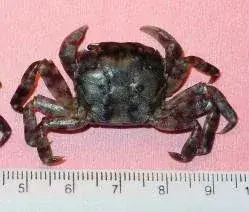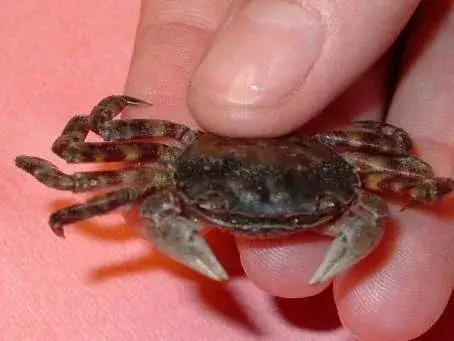
The Asian shore crab, Hemigrapsus sanguineus, a native of the western Pacific Ocean from Russia to Hong Kong and the Japanese archipelago, is also known as Japanese shore crab and Pacific crab. Its known New York range includes the Hudson River and its lower tributaries and Oyster Bay National Wildlife Refuge on the north shore of Long Island. The crab’s means of introduction to the U.S. Atlantic coast is unknown, but it is theorized that adults or larvae were introduced via ballast water discharge from international shipping.

This shore crab has a square-shaped shell with 3 spines on each side of the carapace. Males have a fleshy, bulb-like structure at the base of the moveable claw finger. Carapace colors can be green, red, orangish brown or purple. Claws have red spots; legs are light and dark banded. Adult carapace width ranges from 1.4 inches to 1.7 inches. This species is highly reproductive, breeding from May to September, with females capable of producing three to four clutches per season, each containing up to 50,000 eggs. Free-floating larvae can be transported over long distances during the month that it takes them to develop into juveniles and settle out of the water column.


Owing to this crab being an opportunistic omnivore (it feeds on macroalgae, salt marsh grass, larval and juvenile fish, and small invertebrates), it could potentially negatively impact populations of such native species as fish, shellfish and other crabs by predation and by general food web effects. It could also out-compete native mud crabs, blue crabs and lobsters.
